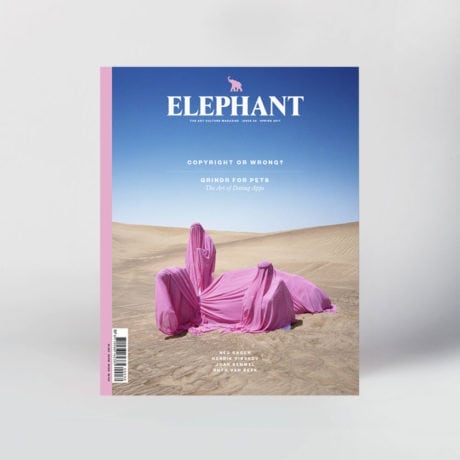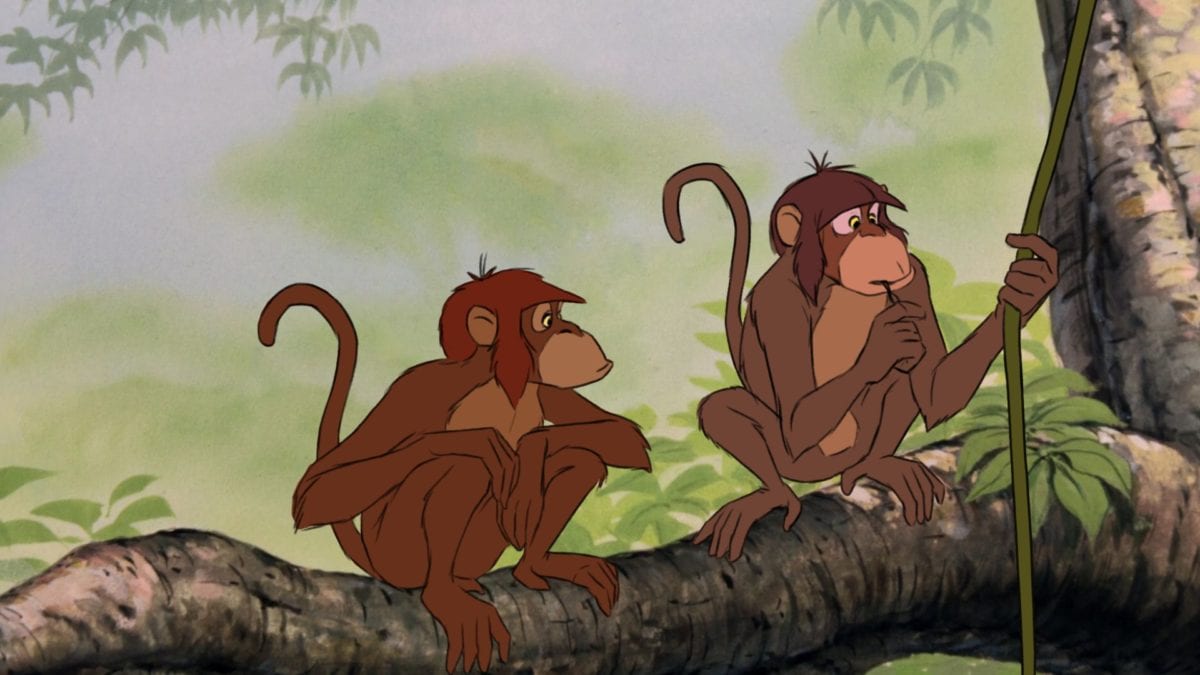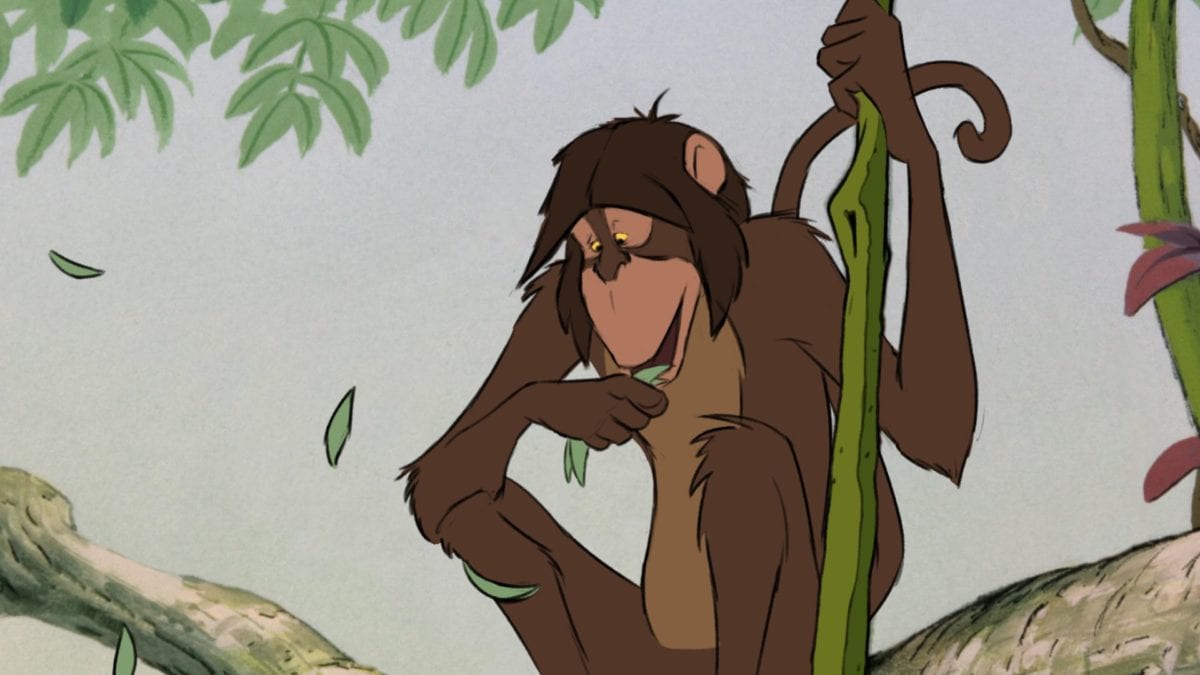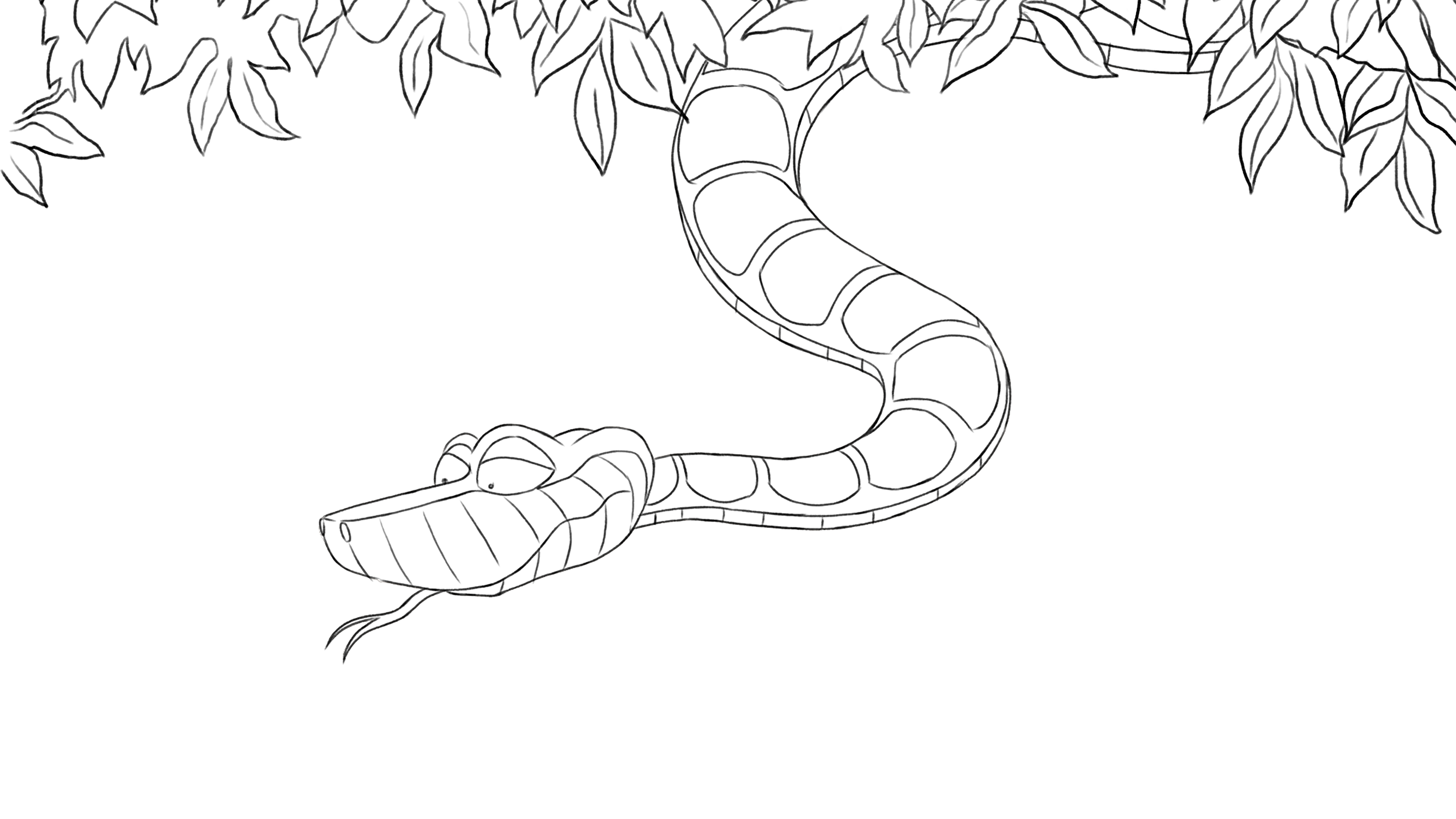
While not strictly an appropriation work, David Claerbout’s Die reine Notwendigkeit (The Pure Necessity) has the potential to ruffle feathers, and it’s not difficult to see why. Disney aren’t known for their warm and cuddly approach to borrowers, and Claerbout’s hour-long animation carries many visual similarities to the 1967 animation The Jungle Book. The work presented a potential legal minefield for the artist, who has spent three years seeking advice on various elements of the film, from the idea of using the original background (itself deemed “a work of art”) to the presentation of individual stills and clips independent of the complete work.
This isn’t exactly new ground for Claerbout. His works often touch on issues of borrowing, though they feel far more complex than the more brazen kind of appropriation we typically associate with the likes of Richard Prince and Jeff Koons. Things tend to be complicated by the artist’s penchant for new technology too. In the case of KING (After Alfred Wertheimer’s 1956 Picture of a Young Man Named Elvis Presley) Claerbout brought a photograph of Elvis to vivid three-dimensional life by grafting fragments of the singer’s skin taken from a multitude of other images to the 2D original.
“How do you claim copyright of a thing that has been entirely blended into a new synthetic reality?” the artist asks when we discuss Die Reine Notwendigkeit and his wider use of found imagery. “I think in the end an ideal court case is one where, through democracy, our common values are the only reference.”
What first interested you in working with The Jungle Book for Die Reine Notwendigkeit?
I was working on something else which was going to be a spatial installation with a wolf, a deer and several other animals observing a tent in a forest early in the morning. It was going to be about a very simple back-and-forth of mankind looking at nature and animals in a suspicious way, and, on the other hand, nature and animals looking back at mankind in a very open way. That was in my head for more than a decade. I started doing research in zoos and animal parks where I could observe animals in captivity. That project didn’t happen because while preparing for it I got the idea for Die Reine Notwendigkeit. I had so much footage in my head from filming animals and they happened to coincide with the characters in The Jungle Book. I came across the final song where the girl sings as she approaches the water and notices Mowgli. I realized the last time I heard that song must have been when I was six or seven years old and I didn’t know if the song was uncanny or familiar, whether it was horrific or soothing. At that moment the synthesis of the whole project came—that this was going to be something where I removed all narration and all dialogue, every type of dancing and, as much as possible, all anthropomorphic features from the animals.
- Die Reine Notwendigkeit (Colour), 2016
I realized from day one that the copyright issue might be enormous, but this is always interesting in the relation between conceptualizing something and actually making it. You have to produce the work in order to see the concrete reality of these issues for yourself. Where we are now, three years later, most of the advice that I have been getting from professional lawyers has been in my favour—even for the coloured version, which me and my studio feared looked too much like the original—but only on one condition: that the viewer sees the entire hour. If the viewer only sees an excerpt, a few seconds, stills or installation shots, then it will give an enormously distorted image of what I have done with The Jungle Book. That brings me to something that I have always been looking for: that duration is key to understanding what I’m doing.
Copyright can be very complicated, especially in art copyright cases where there are a lot of grey areas that can be open to interpretation. During the process did you receive very varied feedback on what was and wasn’t advisable?
You can be in a comfort zone one minute, and then the next question comes and you’re in an illegal zone. There was the question: Did you reuse the coloured backgrounds from the original? I had reused and altered the original painted backgrounds because we needed that to erase the border between the original and my piece, which is crucial to the work. There we immediately entered into a territory that the lawyer said was problematic, because the background itself is also a work of art. I was amused by this verdict because it’s always been at the core of my work too, the relation between background processes and the foreground.
“Do you know the irony? It’s not even an appropriation work”
The backgrounds are all new now, so there is very little recuperation of the original. We have worked with professional animators, eight of whom have this animation as their most complex and challenging work. Some had a moral problem with it. Mainly in the beginning they weren’t sure if they wanted to work on it because they were afraid of being prosecuted themselves, even though I’m the only one signing off the work. But as the work nears completion we feel more relaxed about the copyright issue. There are some of these pieces, as an artist, that you just have to do. You are ideologically motivated by them and it helps not to want to get rich. Do you know the irony? It’s not even an appropriation work. Certain cultural aspects of The Jungle Book have been appropriated but concretely the entire animation has been made anew.
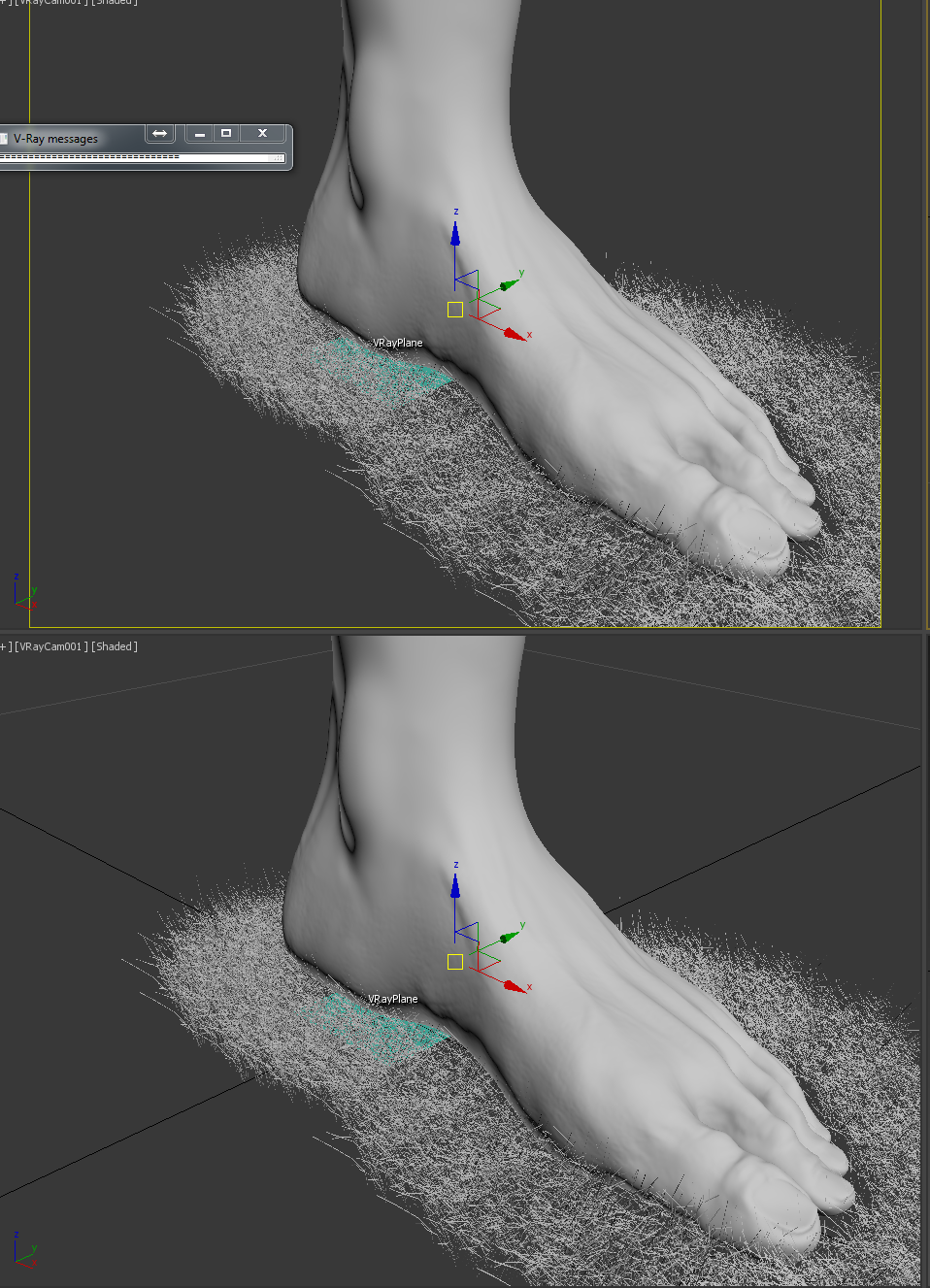
Do you want the question around copyright to be present for the viewer, or do you see it as a separate, practical issue?
I think it is an involuntary question, so it happens and I love to talk about it, but it’s not about copyright. The production that I’ve made is very close in appearance to the original—unless you keep looking. The more you keep looking—and this brings me back, I suppose, to the signature in all the work I’ve made—the more the same thing transforms into a different reality, a different being. Die Reine Notwendigkeit is just a simple piece of language and the complexities of it don’t lie in the copyright issues, I don’t think. It might become, and I hope it does, a fruitful basis for conversations on copyright because it is a very slow-burning example. The work of Richard Prince is of a different nature, it’s much more tableau-esque than mine, it’s far more monumental. Some of the Koons pieces that he’s been contacted about [regarding copyright infringement] become obviously incorporated capitalist sculptures. Pieces like that beg for prosecution.
I have followed certain cases with great interest, like Luc Tuymans. In the case of Tuymans you automatically drag the idea of the masterpiece into the equation and singularity versus the product of a photographer which is plurality and reproduction. Then of course there’s the market value, which can go to several millions of dollars versus a more evenly distributed, demographic reproduction as in photography or video. That plays an important role, I think, whether you work in the market of scarcity or the market of plentitude.
“Looking is increasingly happening in darkness, coming from gathered ideas that are found here and there”
What I’ve noticed in all the discussions of copyright issues is there is a tendency to look for general solutions, which is normal—people would like to mould things in law which apply across a load of artworks. For each case that I’ve followed, from the Tuymans case up to my own efforts to make Die Reine Notwendigkeit, the mistake is to try to generalize things that have a very specific language. The reason it’s becoming so complicated, I think, is because copyright laws are based very much on a time when image culture had not developed the way it has in the last forty or fifty years. The language of image culture has become a very sophisticated language spoken by the intelligentsia. It’s lightning-fast language that makes it very hard for a proper judgement in court.
In King (After Alfred Wertheimer’s 1956 Picture of a Young Man Named Elvis Presley) you used many pre-existing photographs to build a 3D image of Elvis. Do you feel the use of 3D technology further complicates the idea of borrowing images?
Absolutely. I think artists who mix previously separate media are exemplary of contemporary visual language. Obviously things will have to be reconsidered. More broadly this whole culture is locked up in a balloon that is ever expanding. Nothing falls out of it and nothing escapes from it. It is as if we are grabbing from a pool of source material which has been produced already and has a certain authorship already. Looking is increasingly happening in darkness, coming from gathered ideas that are found here and there. So the whole issue of observation is changing, image making is changing. Appropriation culture, which is enormous and will only increase, will expose the limits of copyright law. I expect the whole system to implode at some point.
Is it not possible for the law to catch up, then?
No, I don’t think so. For example, you mentioned the case of King. For King we have authorization for the original image to which I refer in my rather long title, but there is another aspect. In order to make the work I gathered every possible piece of skin I could find in photographs of Elvis Presley. How do you claim copyright of a thing that has been entirely blended into a new synthetic reality? I think in the end an ideal court case is one where, through democracy, our common values are the only reference or the only guidelines.
This feature originally appeared in issue 30
BUY ISSUE 30